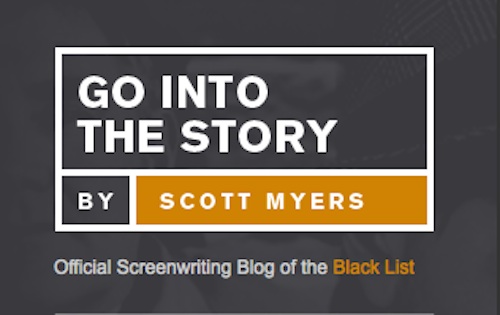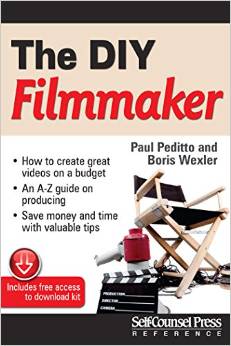I’ve done quite a few of these best blog posts over the years. For screenwriting, let’s face it, there’s GO INTO THE STORY and there’s everyone else. Sure, the John August blog is essential. nofilmschool is a staggering resource. William Martell’s Sex In A Submarine is a killer and, of course, Script Mag where, yeah, I do some writing now and again.
Go Into The Story… what an amazing resource. Kudos to Scott Myers and his staff for their work. Honestly, if you’re just breaking into the biz, you could spend a full week here with what’s been compiled. I’ve identified a few of the best posts for you– hope you take advantage and look them over. I teach at a top 25 Film School and I guarantee you, the learning here matches anything we teach at Columbia College. Vamos!
- 2015 SPEC SCRIPT DEALS
How many spec scripts sold in 2015? Other than Tracking Board, the only researched list I’ve seen is right here. The answer is 55 scripts sold (approximately) in 2015. What’s approximately mean? As Scott Myers says:
“Tracking spec script deals is not an exact science. To make the blog’s list, there almost always has to be some sort of article in the press verifying a deal, but even then that can get dicey because the term “spec script” is itself rather amorphous in meaning.
In the broadest terms, it applies to any deal made for a script written ‘speculatively,’ that is for no fees, just the writer’s own sweat equity with the hope of making a sale. Seems simple enough, but there is a lot of gray area:
* Some deals get announced that are in effect handshake, no money arrangements.
* Some deals are by professional writers with a preexisting relationship with a production group or studio, so that a tacit agreement was in place for the project from the get-go, even if nothing official until the script comes in.
* Some deals are scripts that have been circulating for many months, even years in the process of being packaged, then finally get announced when the project receives a green light.
* Some deals are option arrangements for as little as $5-10K, not what we typically associate with spec script sales (i.e., six figures).
There is no way to determine by any objective standard the precise number of spec script deals in any given year. However since I have been using the same sources of information and standards in tracking deals, it is possible to track trends as well as have at least some idea of what projects got set up in a twelve-month period.
Each day this week, I will provide some analysis of the 2015 spec script deals…”
- 30 THINGS ABOUT SCREENWRITING
Here’s a wonderful list for new writers which gives us, as Myers says… “Reflections on and basic tenets about the craft. They represent my take. If any of them resonate with you, great. If not, feel free to ignore them. Bottom line: You need to figure out your own approach to screenwriting. My hope is what you read on this blog day after day helps feed that process and provides you inspiration along the way.”
I particularly like the subject of Facing The Odds. Being an old craps dealer, I have an appreciation for mathematics. What are your real odds in making it along the traditional Hollywood route?
“About 250 films are made by the studios’ major divisions; another 100 are made by independents, some of whom are owned by the studios. (Another 50 or so foreign features are released each year).
* The WGAW Registry processes approximately 65,000 transactions per year. Of these registry transactions, about half are film, the other half are TV, and some are repeat registrations of further-developed drafts.
I do have an article from the blog Fencing with the Fog, Screenplay Sales statistics which puts the odds of a spec sale at one in 1,100.
Also, this CNN Entertainment article “Screenwriters Chasing the Brass Ring in the Land of Dreams” puts the odds at a spec script being purchased and then produced at 1 in 5375 (1998) if I am extrapolating correctly: (it says that the California lottery is more likely to produce a millionaire!)”
- BLACK LIST WRITERS INTERVIEWED
If you’re writing a spec script you want to end up on the Black List. Check out the archive here. “The Black List was compiled from the suggestions of over 250 film executives, each of whom contributed the names of up to ten of his or her favorite scripts that were written in, or are somehow uniquely associated with, 2015 and will not have begun principal photography during the calendar year.”
The lists for each year are essential reading in themselves. What got made, got bought/set up, who repped what, what genres are hot, who are the new writers. Essential stuff. Also essential are these Black List writer interviews with the writers who made the Black List. Yeah, I’d like to know how you did that! What am I not thinking of in terms of my own career? What do I need to do? What are the common traits of new screenwriters who are succeeding? The interviews break down by topic. Here’s a sample on the subject of character development:
“Plot emerges from character. “Plotting… is a function of character.” If you can figure out who your characters are, what they’ll be going through will emerge from your character development process.
* How? One key is to ask: What do they want? What do they need? Want may dictate the story’s physical journey (Plot), but need can supplant want and alter the course of the Plot. Need can also indicate what the character’s transformation arc is about.
When I participated in the first NYC Black List mini-lab, Beau Willimon (House of Cards) was one of our fellow mentors. In each meeting he had with the five participating writers, he spent the entire hour probing into one question: What does your Protagonist need? Hugely important question.
* You can develop our characters by crafting profiles on them. These can vary and the tools you can use are numerous: Biography, Questionnaire, Interview, Monologue, Sit-Down. The more you learn about your characters in prep, the more the plot will come into being.
* Finally, whereas most writers likely begin with the Protagonist, how about focusing first on the Nemesis character? “I try to make that nemesis as human as possible .” Good advice as a more human Nemesis transforms them into a more dynamic, nuanced figure and less of a stereotype.
How about you? Are you a character-first writer? What techniques do you use to develop your story’s characters?”
- THE BUSINESS OF SCREENWRITING
Monster list of the business side, what you as a screenwriter absolutely need to know going forward. Please check it out. No space left, so here’s just a tiny slice, going from suck to non-suck:
“The first draft of whatever we put down on paper sucks. A screenwriter knows this. We feel it. Deep in our souls. In our very marrow.
How could I have thought this was any good?
It’s a total piece of crap!
What was I thinking?
I could not have been more wrong with my instincts.
It sucks.
I suck.
Actually you will notice a subtle distinction between this sentiment and the Pixar approach. Here is Pixar’s philosophy:
It sucks. Let’s make it not suck.
Here is a more typical screenwriter instinct:
It sucks. I suck.
Note the difference. The latter veers off into self-loathing, self-doubt, and self-medication, days spent avoiding rewrites and nights devoted to carousing dark places to occupy our wounded spirit, leading to an astronomical pharmaceutical bill and an eventual stay at the Passages Rehabilitation Clinic in Malibu.
The former is value neutral. The script sucks because it sucks. Period. No judgment on the creative types involved. It’s simply a stage in the process of becoming non-sucky.”


